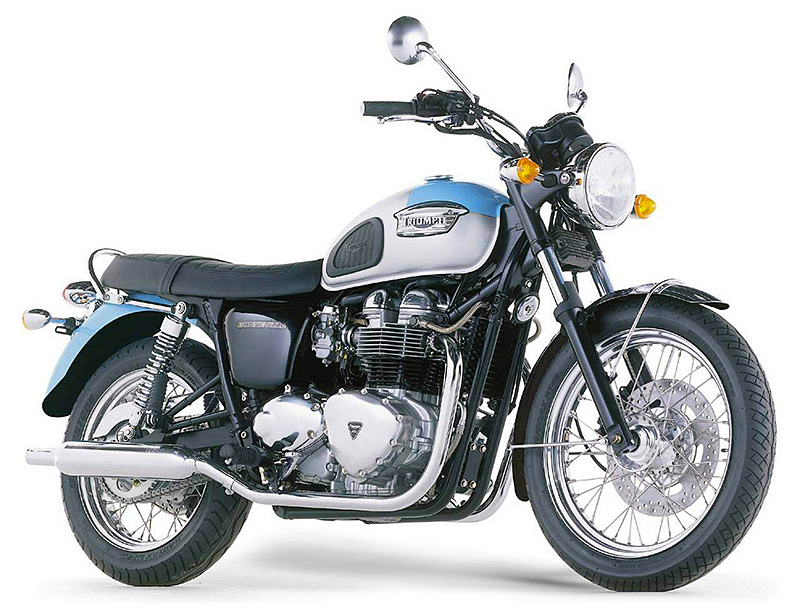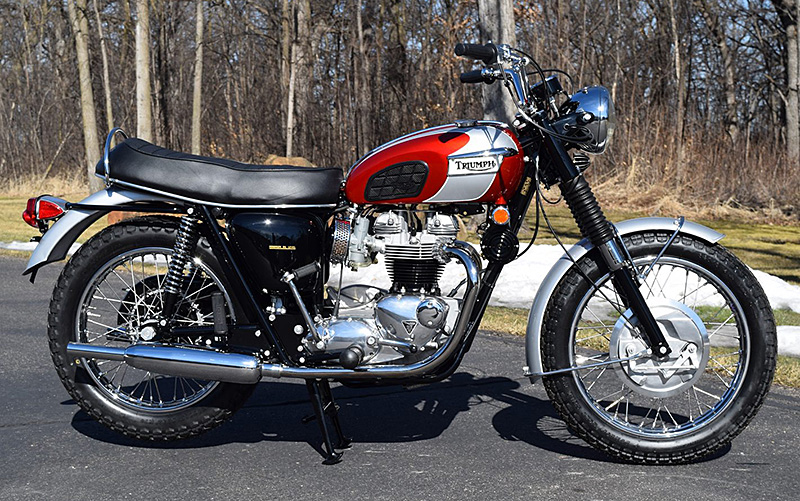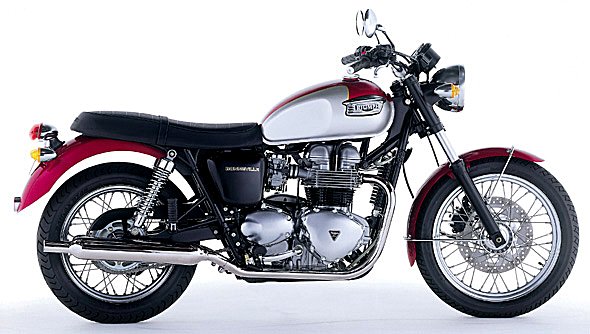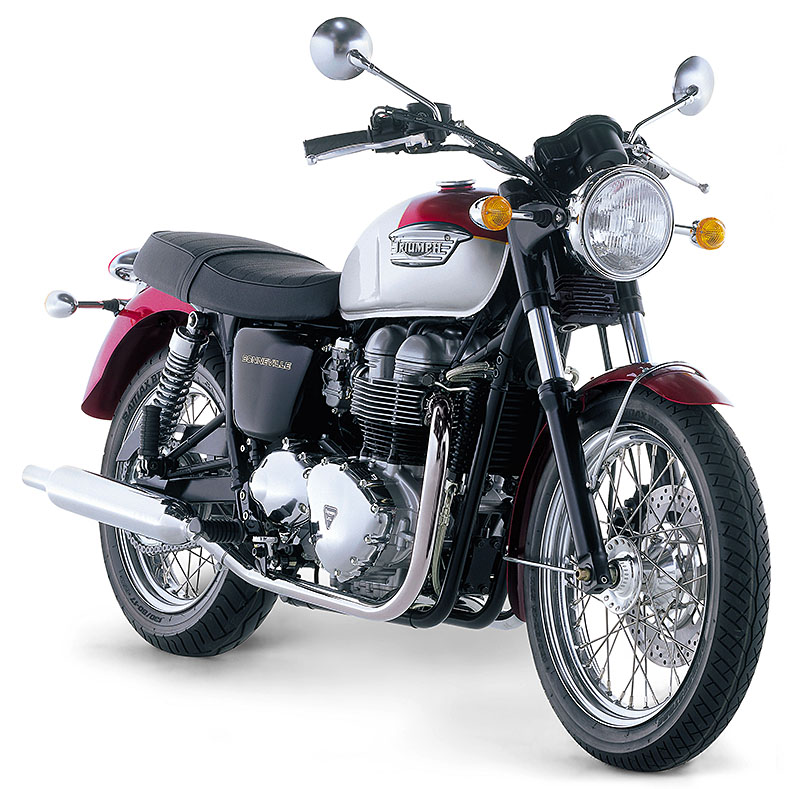Motorcycle Investor mag
Subscribe to our free email news

You again!
by Guy ‘Guido’ Allen, Feb 2021
The good, the bad and the ugly of factory clones
(See the 'You Again' home page here.)


Part 1: Triumph Bonneville
Rebuilding a legend
The revival of the Triumph Bonneville name was perhaps inevitable, however it was anything but instant.
When John Bloor’s Hinckley outfit rekindled the Triumph nameplate as a motorcycle manufacturer from 1991, he and/or his advisers were painfully aware of the huge cultural baggage carried by the Bonneville name. The exploits of this and its parallel twin predecessors were literally epic and to risk that heritage on a cynical badge-engineering exercise would have fatally injured the credibility of the brand’s revival.
So while the company chipped away at its fresh three- and four-cylinder designs, some of which reveled in old brand names such as Daytona, Trident and Tiger, the Bonneville brand was kept on ice.
It wasn’t until the best part of a decade had passed that Triumph unleashed the new-gen Bonneville. It was unveiled at the 2000 Munich Motorcycle Show, for the 2001 model year. Like the original it was powered by an air-cooled parallel twin, though capacity was up to 790cc compared to the 650 of the original T120.
Not only did this bike finally revive what was arguably the most significant name in the entire Triumph catalogue, but it filled an important gap in the range by providing something smaller and lighter than a 900 triple, which had become the base platform.
Where the first-gen Bonneville had been the company’s performance leader, this was the start of a true ‘heritage’ series of twins that offered lively but not earth-shattering performance.

Critics of the new model compared the styling unfavourably to the 1967-69 series Bonnevilles, which were the prettiest of the Meriden creations. (The example shown here is a 1969 model, auctioned by Mecum.) While they may have had a point, the fact was the Hinckley bikes had to survive in a very different regulatory regime that dictated a somewhat different engineering approach.

To be fair, the new machines still looked like a respectable replica of the originals while being infinitely more robust and far easier to ride – as you would expect.
Go to the Triumph UK website and you’ll see myriad model streams of this twin-cylinder series, with a couple of different engine capacities and numerous variants. Long gone are the days when a Bonnie was a Bonnie and the only question was what year it was made and which the maybe two or three variants it might be.
Sales of the ‘modern classics’, as these twins are described, are a significant part of the factory’s 60,000-plus annual total (as of 2019). Driven in part by the success of the twins, numbers in the once all-important USA market reached around 20 per cent of that figure in 2017, or about 13,000 bikes. That’s still a long way from the all-time record set by the Bonneville in 1967, when it hit a staggering 28,000 sales.
Bonneville 790
Power 45kW @ 7400rpm
Torque 60Nm @ 3500rpm
Weight 205kg dry
Rating 5/5
As faithful to the original as you could hope for and unquestionably a commercial success that lead to bigger things.

-------------------------------------------------
Produced by AllMoto abn 61 400 694 722
Privacy: we do not collect cookies or any other data.

Archives
Contact




